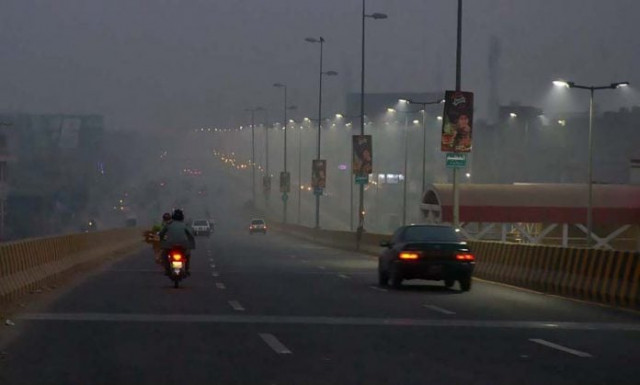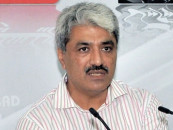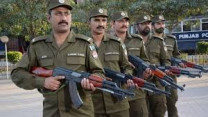Pyrolysis units aggravating smog
Hazardous recycling of tyres, plastic continues despite curbs

The Anti-Smog Squad of the Punjab Environment Protection Department (EPD) has failed to stop the operation of dozens of tyre, tube and plastic recycling units that produce, carbon contributes to pollution in the big cities of the province.
Sources in the department conceded that the pyrolysis plants were continuously operating despite the risk to public health.
They said officials of the department believed that the Punjab government should prepare a strategy to curb the production of carbon and the district administrations would have to play an active role in this regard.
Meanwhile, the smog has reached alarming levels in Lahore, Gujranwala, Sheikhupura, Kasur and parts of South Punjab. Reports from various cities show that a large number of people are facing health problems caused by the smog.
The Anti-Smog Squad of the EPD had been set up to shut all factories, mills and other units contributing to the problem in the provincial capital. However, the production of carbon at the pyrolysis units and its transportation to factories within Lahore and to other cities has not stopped. According to environment experts, the recycling process and the burning of the toxic carbon contributes to smog in the localities.
Health experts have been stressing the need to enforce a ban on the production of carbon dioxide, carbon monoxide and methane during the smog season because of the heightened risk of breathing problems, chest infection and other diseases for the population.
Keeping in view the pollution level in Lahore, the Punjab government banned the activities producing carbon in the pyrolysis units tasked the Anti-Smog Squad to enforce the restrictions.
"It is disappointing that these units are doing their business around Lahore and transportation of the hazardous material is also continuing in the whole Punjab.
The EPD’s Anti-Smog Squad was failed to overcome the problems despite sealing some units,” a senior official of the department told The Express Tribune.
He regretted that the smog problem in Lahore and nearby cities was continuously getting worse despite administrative actions, including sealing of hazardous businesses.
“Under the anti-smog strategy, in the first phase we have to stop burning of carbon in factories and seal the pyrolysis plants. The smog is likely to be at its peak in the coming weeks Even the senior officials of the EPD are demanding that the Punjab government consider additional measures to cope with the situation in view of the efforts of the Anti-Smog Squad having proven inadequate,” the official added.
The manager of a pyrolysis unit, Muhammad Yousaf, said the plants were situated around Lahore, especially in the areas of Mahmood Booti, Shahdara, Manga Mandi, Kasur Road, Kot Lakhpat and Wagha, which were producing carbon by burning tyres and tubes.
He alleged that the Anti-Smog Squad had sealed small units while influential people are openly doing the business.
He said a major crackdown against toxic carbon production should be launched by the local governments like the past years.
Lahore and adjoin areas, including Sheikhupura, Gujranwala and Kasur are facing the first phase of smog, especially during the school and office going hours.
"The number of patients approaching the outpatient departments of local hospitals has increased in recent weeks. Most of them complain of cough, eye diseases, chest infection and breathing problems,” said Ear, nose and Throat Specialist Dr Muhammad Haseeb.
He said the people should wear mask and glasses to remain safe from the smog.
He said the adverse effects of smog had started and the citizens would have to remain careful during the coming two months because of the high level of pollution.
Published in The Express Tribune, October 31st, 2022.



















COMMENTS
Comments are moderated and generally will be posted if they are on-topic and not abusive.
For more information, please see our Comments FAQ